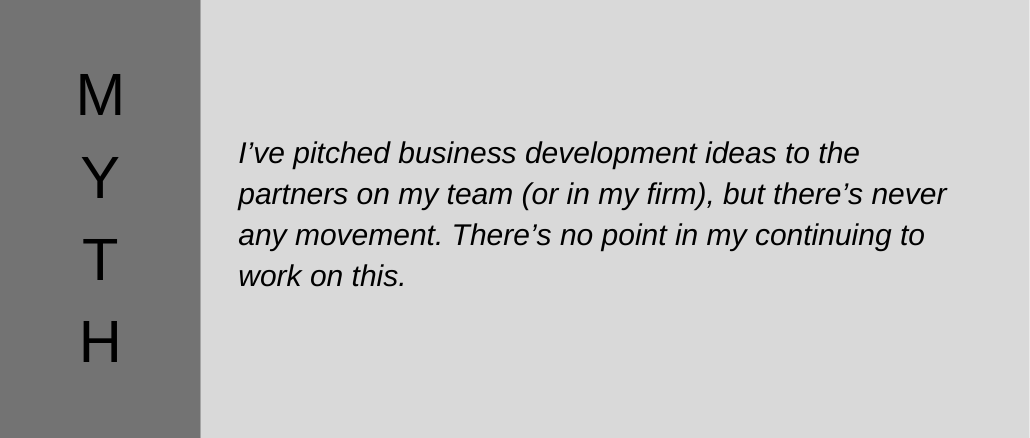Representing An Unrealistic Client
One of the most challenging client relations issues that lawyers face is representing an unrealistic client. It’s easy to see how a client can fall into what is, objectively, an unrealistic expectation about his situation. After all, many clients (corporate and individual) are deeply invested in their matter, and many clients (especially individuals) are likely to have few legal issues, so those they do have are of critical importance, stress-inducing, and wrapped up with a variety of emotions.
Since lawyers by definition deal with a variety of cases ranging from fairly minor to deeply complex, it’s easy for lawyers to lose sight of the client’s perspective on an issue. Generally, we get a sense of the client’s perspective early in the case, but especially where something is largely paper-based or not on an urgent timetable, it’s easy to let that slip away in the press of business. And that’s where things get dangerous and unpleasant.
The top client relations skill, then, is to observe the client’s point of view on a case and to keep that in mind while handling the representation. The result is that if the case takes a small but unfortunate bounce, you might choose to call the client or meet with her rather than send the news via email or letter.
Moreover, keeping the client’s perspective in mind allows you to recognize if and when a client slips into unrealistic expectations about his case, such as the finances (whether that’s legal fees, costs, or the expected damages, settlement value, or cost of the deal), or the speed with which the matter should be resolved. The quickest way to a dissatisfied client is to lose sight of how the client is viewing what’s happening with your representation. The second quickest is to fail to tailor your communications with the client to take account of how he’s seeing things.
So, what if you realize that your client is expecting a recovery in the millions when you think (and perhaps you’ve even told the client) that the case is worth only in the range of $10,000, or that the case should be resolved within 2 weeks, etc.?
- Communicate. Find out why your client thinks what he thinks. You’ll often find that he’s been consulting with a well-meaning but underinformed friend who’s a lawyer or other “expert.” We all know that a single fact can take a case from “high value” to “dog,” and it’s a reasonable bet that the client will have disclosed only some of the facts, that the “expert” won’t know the law in the area, or that the conversation was only casual commiseration and the client took a comment far more seriously than it was intended.
- Communicate in writing. We’ve all had the experience at some point of hearing a lot of information and remembering only some of it. Obviously, the same goes for clients. So you might consider drafting a detailed engagement letter that includes information such as the expected time to resolution, the expected fees for various stages of the engagement, and/or your initial assessment of the case — all, of course, with language that indicates that this is your best estimate but that subsequent events or discoveries could change the situation dramatically. Writing such a letter not only confirms that you’ve discussed these issues, it also gives the client something to return to down the line to refresh his recollection.
- Address the unrealistic expectations right away. As soon as you sense that your client is holding some expectation that you consider unrealistic, address it. Immediately. And be sure other lawyers and support staff who deal with the client are prepared to notice unrealistic expectations and let you know about them, immediately. Like mold on cheese, unrealistic expectations grow if not cut off.
- Explain why things are as they are. So, for instance, if a client thinks a negotiation is taking too long when it’s about average, share your experience with your client. Let him know how long things like this usually take, what’s causing any delay, and whether you think the delay is reasonable. Depending on the situation, this step could be delegated to a paralegal or could be incorporated into a regular matter update to the client. In other words, be proactive when possible.
- Review your client intake procedure. A good client screening process is important to your practice and your sanity. If you find a number of clients who hold unrealistic expectations, perhaps that reveals something about the way you’re communicating with clients in the initial meeting. (The same holds true if you find yourself surrounded by difficult clients.) Consider whether you need to spend more time or energy evaluating clients before accepting the representation. It’s impossible to screen out every client who will be challenging, but if you keep getting these clients, you’ll be well-served by investigating why that’s so.


